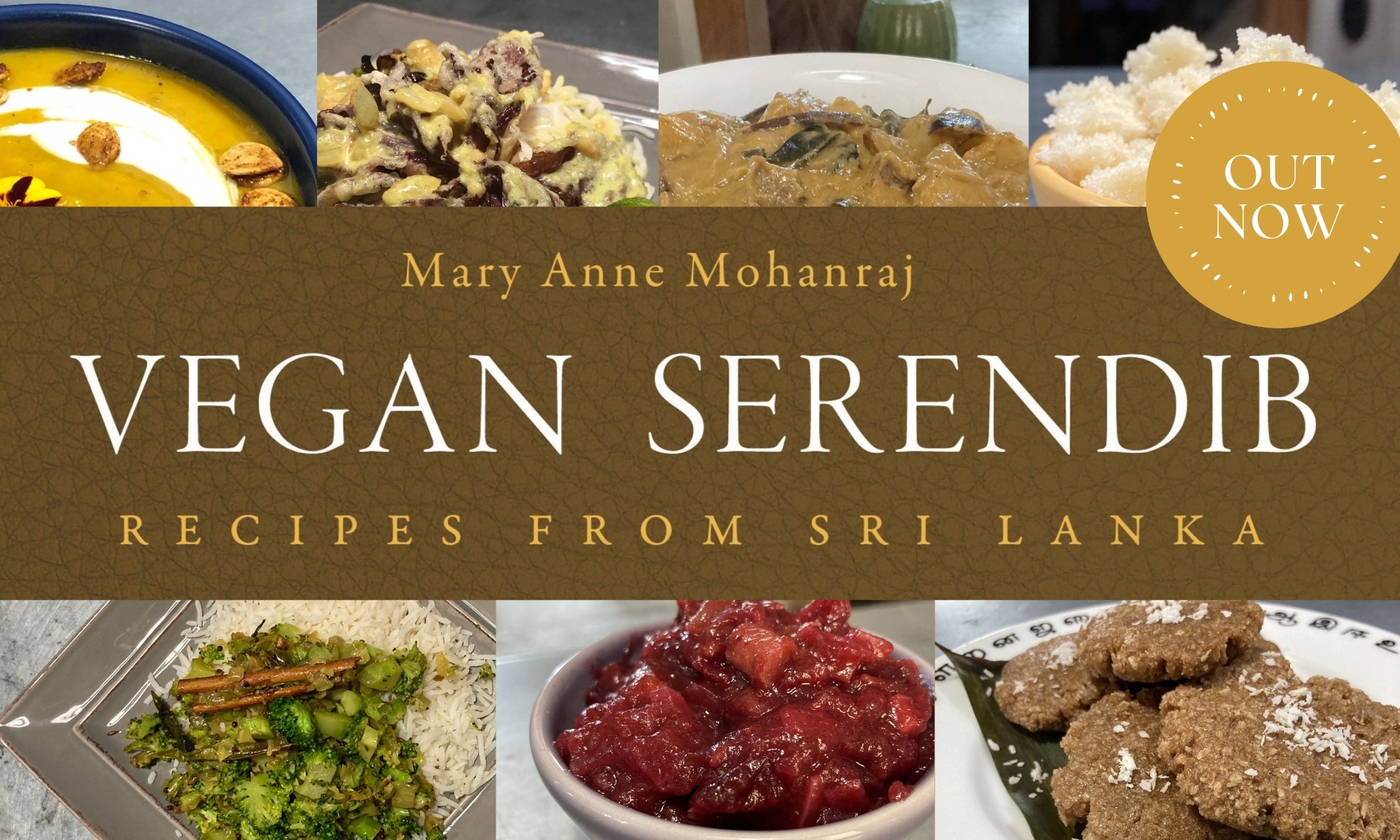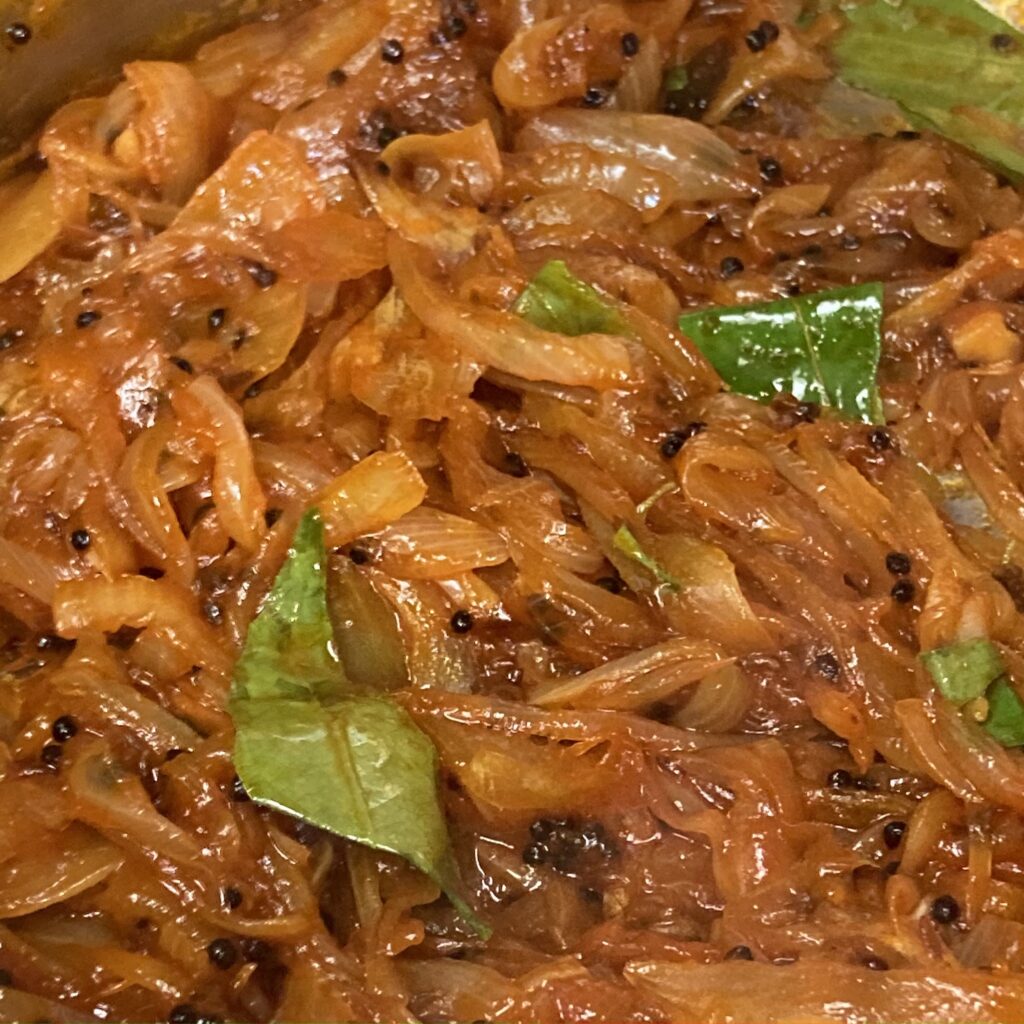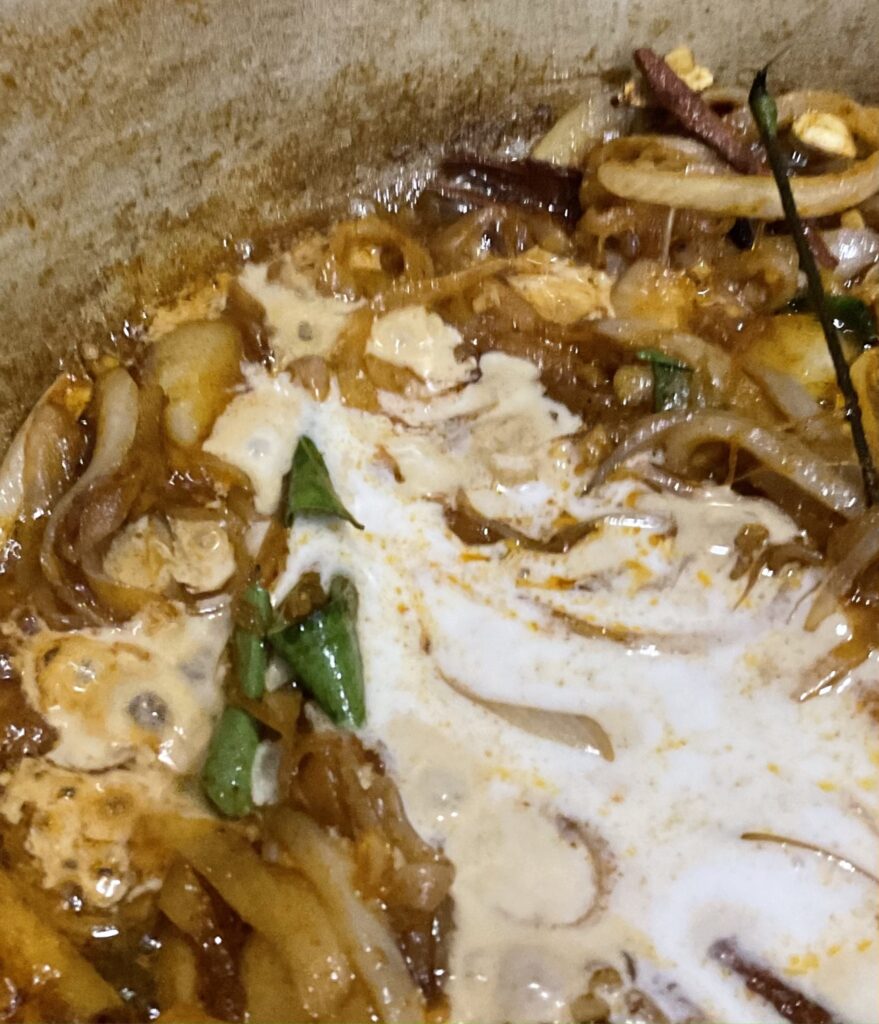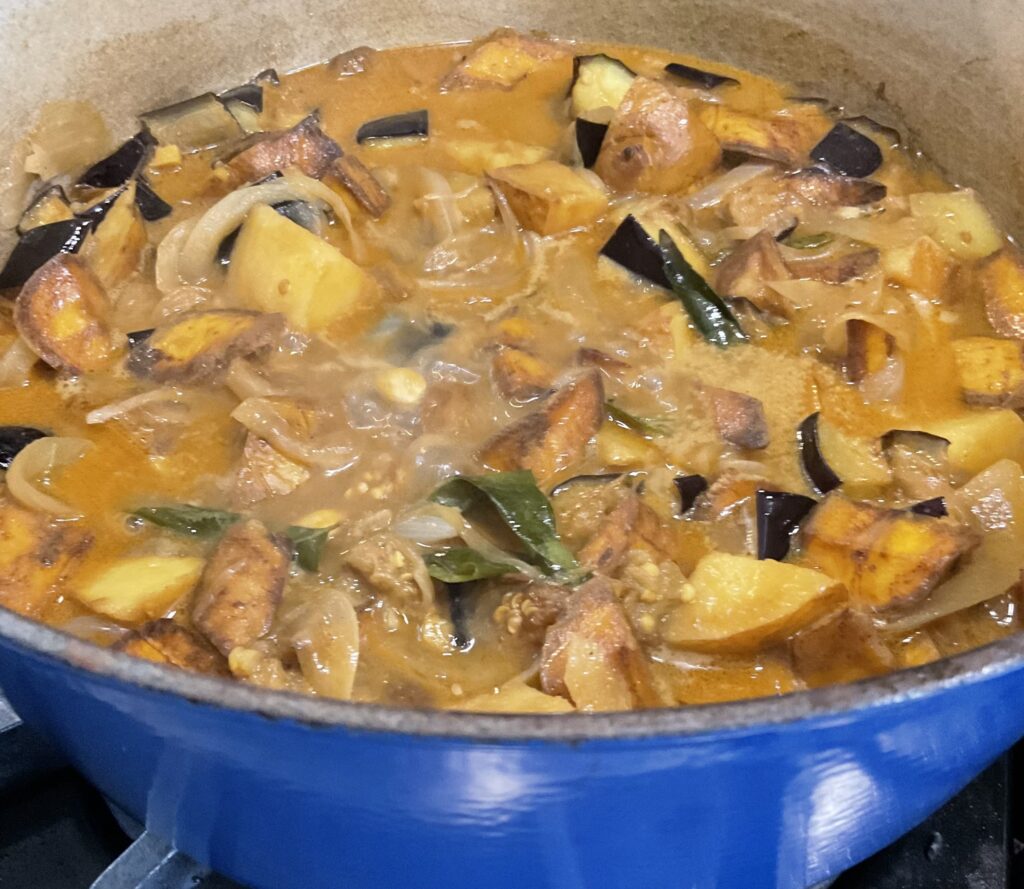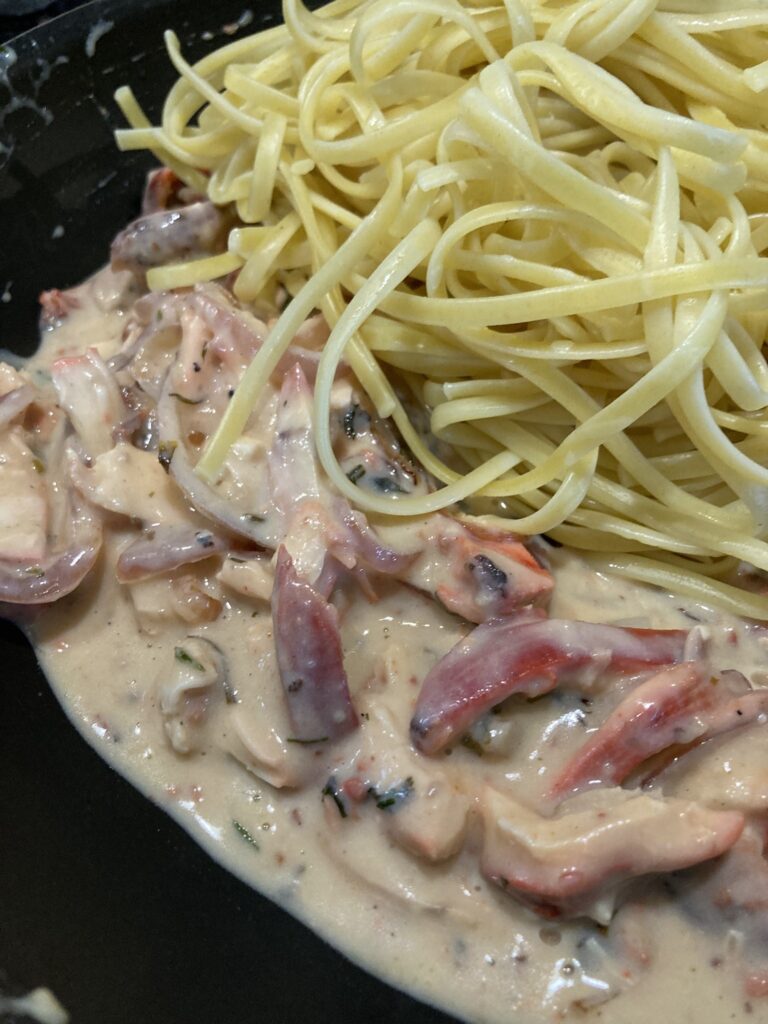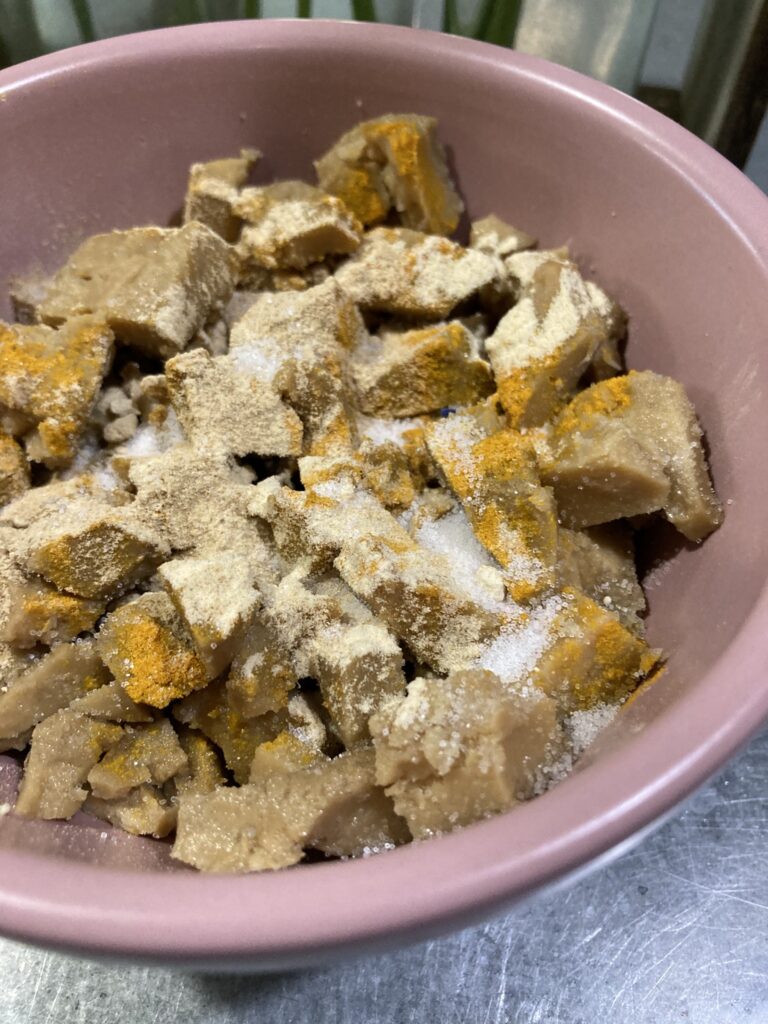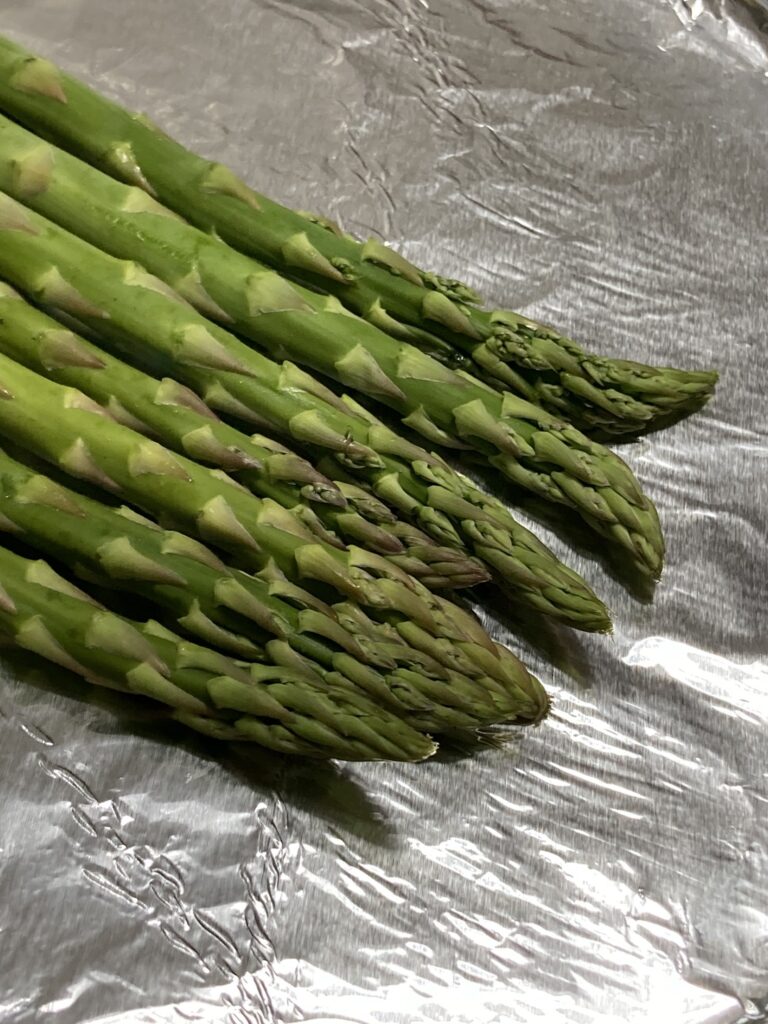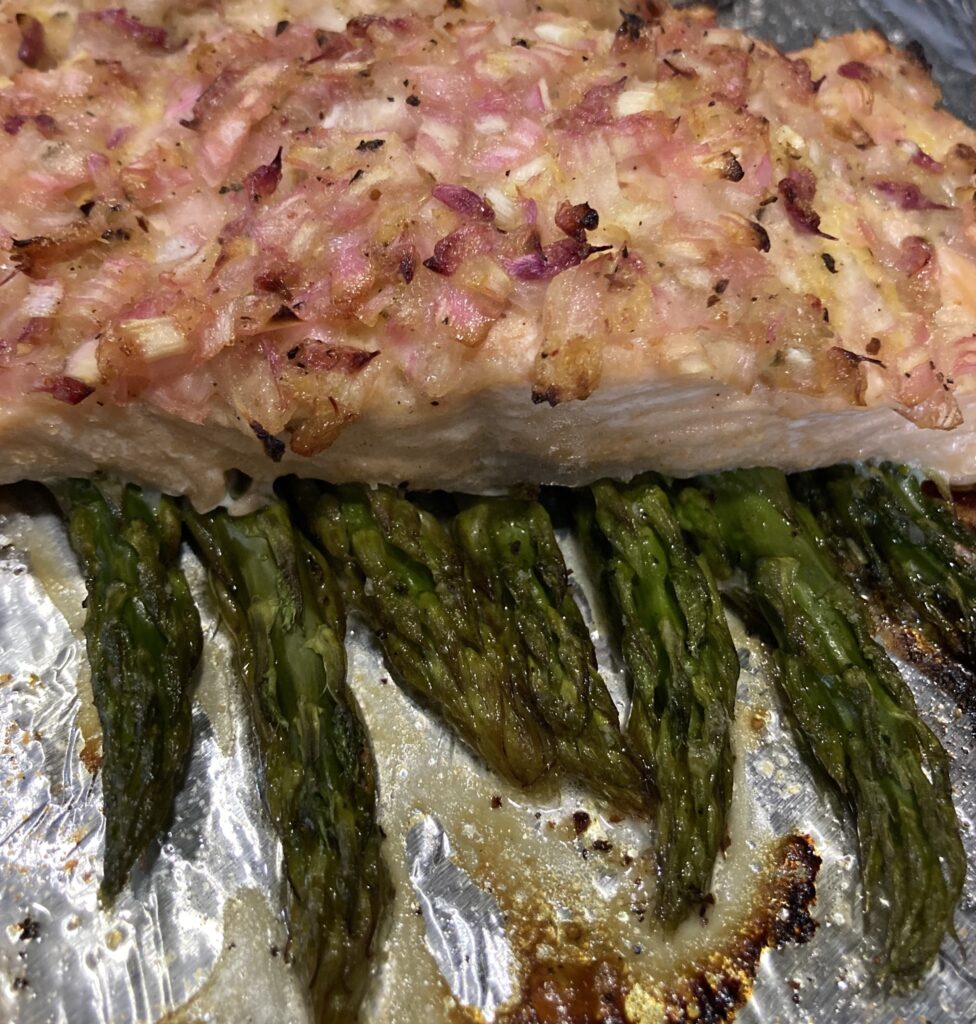Devilled Eggs
This is called devilled eggs in my cookbook, which always confuses people, because Americans mean something very different by devilled eggs. But I swear, that’s what we call them in Sri Lanka.
It’s really devilled onions with eggs — you hard-boil the eggs, and then slice them in half and top them with devilled onions. (I didn’t slice these yet, because they’re for a party on Sunday and I’m cooking in advance; I’ll do that step just before the party to maintain egg freshness.)
You can use devilled onions for whatever you like — even use oil instead of ghee and then they’re vegan. They’d be great on a sandwich with grilled mushrooms or eggplant, for example. And if you’re not vegan, then consider grilled chicken or pork. Yum!
The basic process is to:
– that’s basically it — this is one of the first things I learned to cook in college, and I made it just like that — but if you want to fancy it up a bit, you can add a little lime juice, jaggery, and some curry leaves for added complexity
Actual recipe in Feast, of course. ![]() Vegans, would it be helpful to have the devilled onion recipe in Vegan Serendib? I hadn’t planned on it, but it’s easy enough to add…
Vegans, would it be helpful to have the devilled onion recipe in Vegan Serendib? I hadn’t planned on it, but it’s easy enough to add…
Vegan Serendib Kickstarter running here (stretch goal: a cocktail party recipe book!) — https://www.kickstarter.com/…/vegan-serendib-a-sri…
Kaliya Curry (Eggplant, Plantain, and Potato)
A traditional Sri Lankan curry from our Muslim community, featuring fried eggplant, plantain, and potato, simmered in a rich coconut milk curry.
vegetable oil for deep frying
2-3 c. water (enough to cover)
1. To prevent discoloration and add a little flavor, once you cube eggplant and plantains, submerge them (separately) in bowls of water, each seasoned with 1/2 t. turmeric and pinch of salt.
2. Heat oil for deep frying in a large, deep pan. Drain eggplant (water will make it splatter when it hits the oil, and can be dangerous). When the oil is hot, working in small batches, fry eggplant until lightly browned, then remove to a plate lined with paper towel. Repeat process with plantains and potatoes.
3. In a large pot, heat 1/2 c. oil (you can use the frying oil), then add sliced onion and sauté, stirring, until golden-translucent.
4. Add ginger, garlic, cloves, cardamom pods, cinnamon stick, curry leaves, pandan leaf (if using), curry powder, cayenne, jaggery, tamarind paste, salt, and 1/2 c. coconut milk.
5. Gently stir in fried ingredients; add enough water to cover, bring to a boil, cover, and turn down to a simmer. Simmer 10 minutes; vegetables should be cooked through.
6. Remove lid, add remaining coconut milk, stir very gently to combine, taste and adjust seasonings; you may want more salt or a little more tamarind. Simmer 5-10 more minutes, to a thick, rich gravy. Serve hot (or room temperature) with rice; dal is a nice accompaniment to add protein and make a complete meal.
Tandoori Chicken
We frequently get a whole tandoori chicken from local restaurant Khyber Pass, but day-after takeout tandoori chicken can be a little dry. Usually I like it fine on sandwiches with a little mayo and some chopped green chili, but sometimes I get motivated to do a little more:
– add cooked pasta
Several more meals for the family…
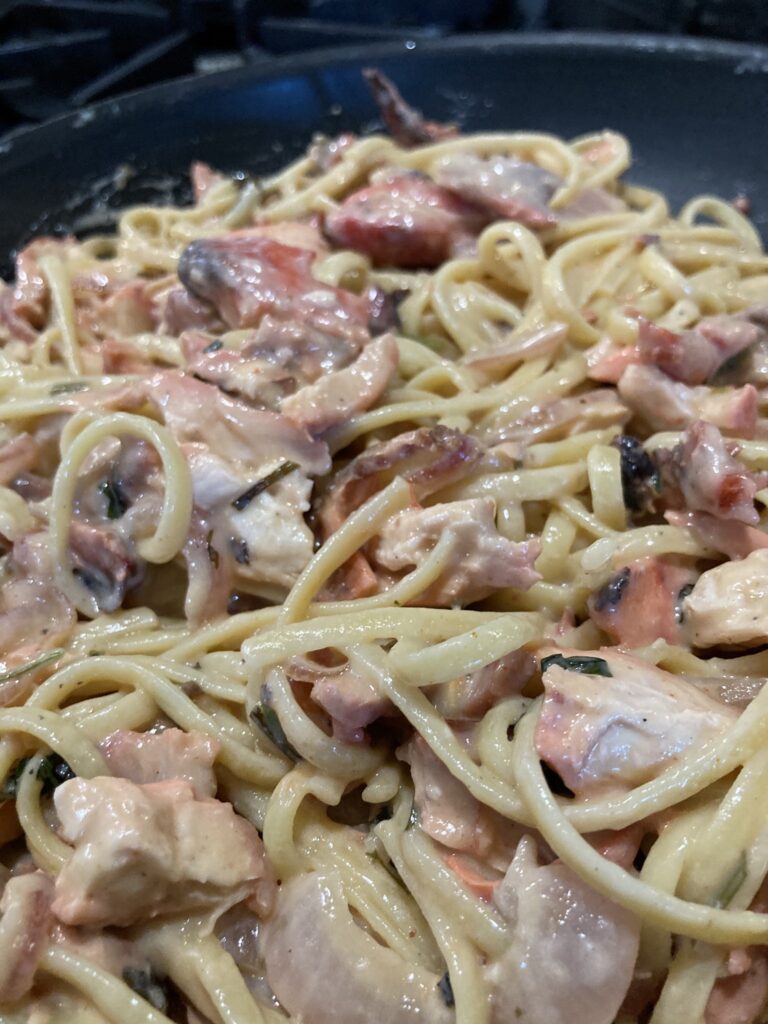
Yaalpana Kaththarikaii Poriyal / Jaffna Whole Eggplant Fry
(serves 2-4, 15-30 minutes)
Sometimes the simplest dishes are the most fabulous — the base version of this whole eggplant fry uses just a few ingredients (cayenne, turmeric, salt, and hot oil) for delicious and dramatic results. It also dresses up beautifully for a fancier night out, offering grace notes of shallot, green chili, and cherry tomato.
oil for deep-frying
salt & lime juice to taste
1. Make eight slits down the sides of the eggplants.
2. Mix the cayenne, turmeric, and salt, and rub the spices into the slits (it’s fine if they’re detached completely at the bottom, which will make it easier to rub in spices).
3. Heat oil for deep frying (around 375F if using a thermometer) and fry the whole eggplants until they brown evenly, about 3-5 minutes. Remove to a paper towel-lined plate to drain.
NOTE: You can stop the recipe here and just eat the fried eggplants as is, with rice. Delicious! Or you can add a few more steps for a more complex version.
4. To a sauté pan, add a few T of the oil from deep frying, and add diced shallot, diced chili, curry leaves, and tomatoes. Cook on medium-high, stirring, about 5 minutes, until onions are golden-translucent and tomatoes have softened.
5. Add whole fried eggplant to pan and cook an additional 5-10 minutes, stirring; taste and adjust seasonings — you may want to add 1/2 t. salt, or up to a T of lime juice at this point. Serve hot with rice, and enjoy!
Marinated Ginger-Garlic Tofu
(20 minutes + marinating time, serves 2-4)
This is definitely a fusion dish — I combined our Sri Lankan ginger-garlic chicken recipe with a traditional marinated tofu recipe, for a result that I found delectably more-ish — I didn’t even wait to make rice, but just kept nibbling pieces right off of the serving plate. Yum!
sesame seeds, chopped chives, chopped cilantro to garnish
1. Combine tofu, spices, 1 T lime juice and 2 T oil in a bowl and stir gently to combine. Marinate for 20-30 minutes (or longer, if you like), for additional flavor.
2. Heat oil in a sauté pan and pan-fry on high, stirring, for about 5 minutes. (You may deep-free or bake, if preferred. If you deep-fry, you’ll likely get more textural contrast between the crispy outer tofu and the soft interior.) Remove to a plate lined with paper towel to drain excess oil.
NOTE: You can stop and eat it at this stage, but it will be even tastier if you continue…
3. In the same pan, sauté sliced shallots on medium-high (adding oil if needed), stirring, until golden-brown and slightly crispy.
4. In serving bowl / plate, top tofu with shallots, then garnish with another 1-2 T of lime juice (to your taste), a little white sesame seed, chives, and cilantro. Chopped cashews would also be nice as a garnish. Serve hot with rice.
Marinated Ginger-Garlic Seitan
(10 minutes + marinating time, serves 2-4)
My son would like to be vegetarian, so we’ve been working on developing recipes he’d enjoy — he gobbled up quite a bit of this last night, so I think we can declare seitan a success.
Seitan is wheat gluten, made by washing wheat flour dough with water until all the starch granules have been removed, leaving only the gluten. The resulting mass can then be cut into small pieces, which expand on cooking. For those looking for a chicken substitute, this has come the closest out of my attempts, in texture and flavor.
An easy and satisfying weeknight dish; I recommend trying it with rice and an eggplant or mango curry.
oil to fry
1. Combine seitan, spices, lime juice and 2 T oil in a bowl and stir gently to combine. Seitan will break up into small pieces as you stir. Marinate for 20-30 minutes (or longer, if you like), for additional flavor.
2. Toss gently in flour.
3. Heat oil in a sauté pan and pan-fry on high, stirring, for about 5 minutes. Remove to a plate lined with paper towel to drain excess oil. Serve hot with rice or naan and a vegetable curry or sambol.
NOTE: Seitan can be made easily from scratch, if you’d prefer to buying it ready-made.
Marinated Ginger-Garlic Tempeh
(10 minutes + marinating time, serves 2-4)
This was my first attempt at a variation on Sri Lankan ginger-garlic chicken, and I think it works fine — IF you like the texture and flavor of tempeh, which is pretty distinctive. Tempeh is a traditional Javanese soy product that is made from fermented soybeans. Personally, I can enjoy a little bit of this — I’d like it tossed in a salad, for example, but don’t necessarily want a lot of it straight up as an entree.
2 T oil + oil to fry
1. Combine tempeh, spices, lime juice and 2 T oil in a bowl and stir gently to combine. Marinate for 20-30 minutes (or longer, if you like), for additional flavor.
2. Heat oil in a sauté pan and pan-fry on high, stirring, for about 5 minutes. (If you prefer, you can either deep-fry or bake the tempeh.) Remove to a plate lined with paper towel to drain excess oil. Serve hot.

Salmon and Asparagus with Pickled Redbud & Lemon Sauce
(30 minutes, serves 4)
Have you pickled some redbuds? Want to dazzle your guests at a spring luncheon? I’m not sure you can do better than this delicious tangy salmon & asparagus — it’s beautiful and very more-ish. Serve with a hot crusty dinner roll slathered with butter (redbud butter, if you want to be extra fancy), and you’re good to go.
You can use pickled redbuds in any recipe where you’d use capers.
additional fresh redbud blossoms to garnish
1. Preheat oven to 450 F.
2. Whisk first five ingredients in a small bowl to blend. Season sauce with salt and pepper to taste.
3. Cut three 1/2-inch deep slits crosswise in top of salmon, to allow sauce to flavor. (Don’t cut all the way through.)
4. Line a rimmed baking sheet with parchment paper or foil; arrange asparagus in even layer on baking sheet. Drizzle with oil and turn to coat, sprinkle with salt and pepper.
5. Place salmon atop asparagus, brush half of sauce over the salmon, reserving the rest.
6. Roast until salmon is just opaque in the center, about 20 minutes.
7. Transfer asparagus and salmon to serving dish, garnish with additional fresh redbud blossoms, and serve with remaining sauce alongside.
Pickled Redbud Recipe: https://serendibkitchen.com/2021/04/14/pickled-redbuds/
Irasavalli Kizhangu Kanji / Purple Yam Pudding or Porridge
(30 minutes, serves 4)
This is one of the prettiest Sri Lankan dishes — the color is sure to delight dinner guests and children. It’s healthy too! Yams are good for you, and so is coconut milk; you can feel happy serving this dessert to one and all. Irasavalli is also often eaten for breakfast, in the same way as a rice congee (or oatmeal).
Purple yam (Dioscorea alata), also known as ube (Philippines) or isu ewura (Nigeria), is native to Southeast Asia. It can be found fresh and frozen in your local Asian grocery stores.
1 drop rose essence, or pinch of cardamom (optional)
1. In a saucepan, combine yams, coconut milk, and water. Bring to a boil and cook ten minutes, stirring occasionally, until yams are cooked through.
2. Remove from heat and either mash with the back of a wooden spoon, or use a blender (an immersion blender makes it easy) to puree the yam and combine it with the coconut milk.
3. When well blended, return to heat, add remaining ingredients, and simmer 10-15 minutes more, stirring, until pudding is thick and starting to pull away from the sides of the pan.
4. Serve hot, with your choice of garnishes — ripe banana, ripe mango, coconut flakes are all good options.
NOTE: If you’re using frozen yams, they may have lost some color in the freezing process. If the purple is not sufficiently purple for your delight, do feel free to add a drop or two of food coloring.
